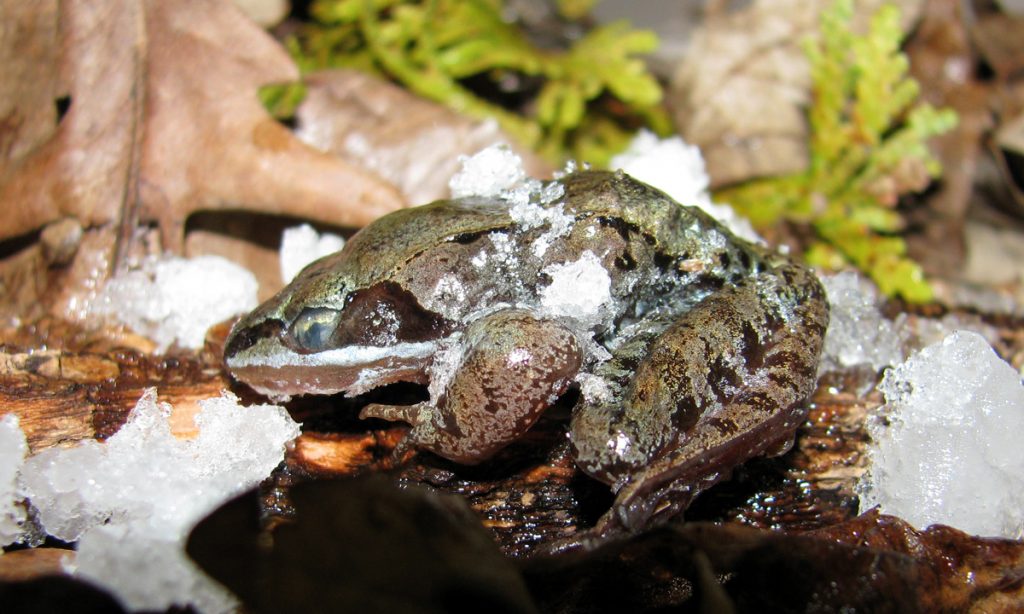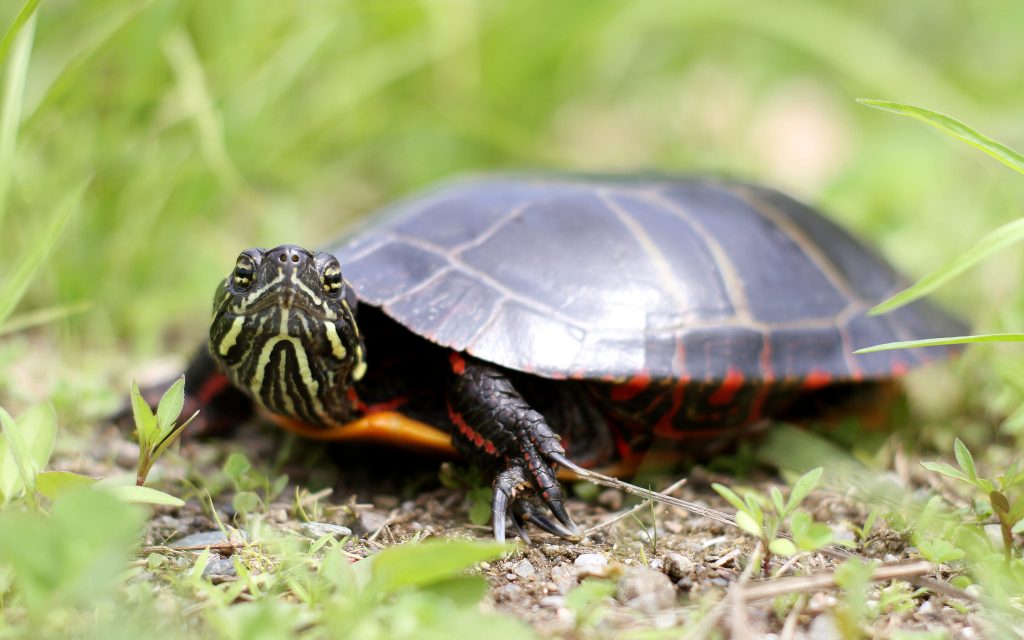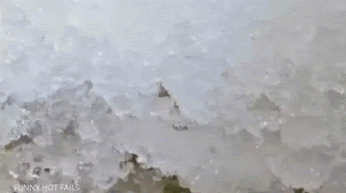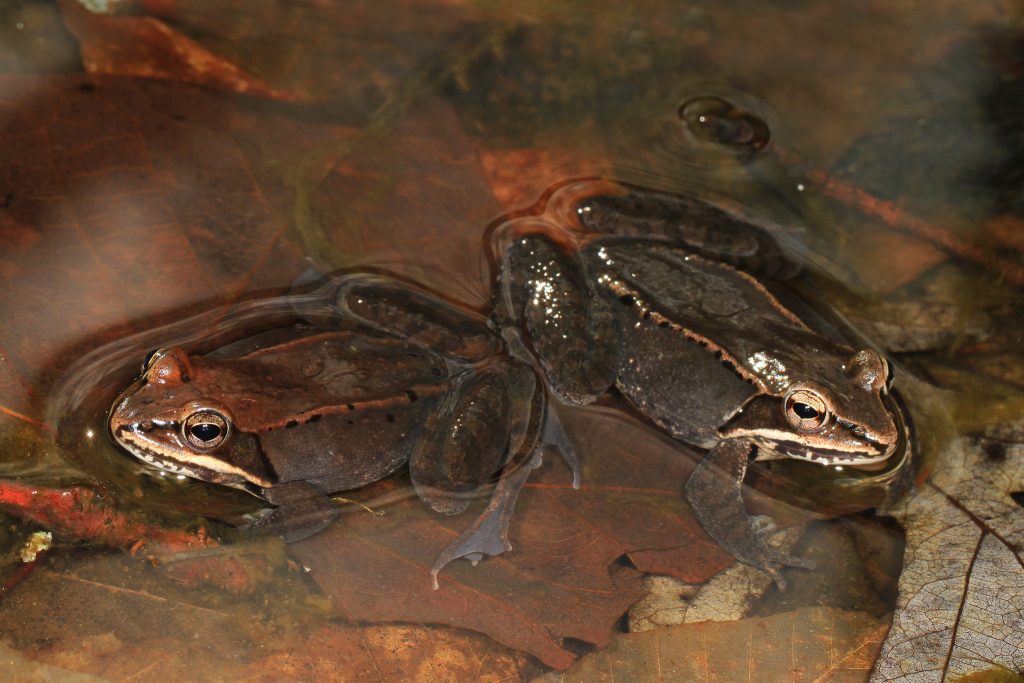
The coldest time of year can be a bitter inconvenience for humans, but for many species, surviving winter temperatures means wielding evolved biological tricks that appear to cheat Death itself — all of which make grumbling about donning a hat and extra layers a little trivial, in retrospect.
From frozen frogs to butt-breathing turtles, here are the marvelous physiological adaptations some of the most cold-tolerant critters employ to beat harsh winter conditions.

When Shell Freezes Over
Painted turtles (Chrysemys picta) are widespread across North America, where they frequent slowly-moving freshwater environments. These same water courses can freeze over in winter. During this time, the turtles can be found exactly where they are for the rest of the year: underneath the water — now trapped under a lid of ice. For air-breathing animals, being stuck under lake ice is panic-inducing. But the turtles, incredibly, are fine. And they’re fine for months, resting on the muddy bottom without taking a single breath.
The secret is their metabolism. Turtles, being reptiles, have metabolisms that are largely driven by the surrounding temperature. In the near-freezing water, their metabolism grinds almost to a standstill, barely ticking along like a laptop in “power save” mode. This reduces a huge fraction of the oxygen needs for cellular respiration.

What middling oxygen the turtles need can actually be pulled straight from the water and mud through blood vessel-rich, makeshift “gills” formed from the tissue of their cloaca (a catchall orifice for waste excretion and reproduction). That’s right, underwater, painted turtles breathe with their butts.
Sometimes, because there’s no access to the open air, the pond or lake can become devoid of oxygen over the course of the winter. These “anoxic” conditions are countered by switching up how the turtles break down energy reserves, switching to degrading glycogen instead of fat stores. The process makes lactic acid, which accumulates internally. This would be fatal, but painted turtles steal calcium from their own shells to neutralize the acid.
When spring comes, the turtles emerge and sun themselves, stiff with sore, acid-laden muscles, and rev their metabolic engines back to normalcy.
Frogsicles
North American wood frogs (Lithobates sylvaticus) make painted turtle overwintering rituals look easy. To ride out the cold months, they make a little pit in leaf litter near a body of water and hunker down. There, exposed to the full, cruel, sub-zero winter inside the Arctic Circle, their bodies almost entirely freeze solid. Yet seven months later, they thaw and spring away.

But these are no lakeside Lazaruses—they were alive the whole time.
In autumn, the wood frogs go through a cycle, freezing at night and thawing in the morning. Eventually, temperatures stay below freezing all day, and the frogs remain stiff. Their hearts stop moving and their blood pools. Much of the body is rigid and loaded with ice. But the frogs use a quirk of biochemistry to stay alive.
During their cyclic “cool down” phase in the fall, it’s thought that the frogs convert their liver’s glycogen into glucose, which is then packed into their cells. Ice crystals form in the spaces between cells, concentrating sugars and salts. Normally, this concentration gradient would sap out the water from surrounding cells, dehydrating and killing them. But since the cells are saturated with glucose, they safely retain their water until the warm weather returns.
Freeze-Proof Beetles
Still, none of this compares to the lengths the larval northern red flat bark beetle (Cucujus clavipes puniceus) will go to in order to stay alive during the winter. These beetles — native to northern Canada and Alaska — go through a larval grub stage living inside dead trees. In far northern forests, wintertime temperatures can plunge to sixty degrees below zero or more. But these little grubs aren’t bothered because they are nearly impossible to freeze.

Like the wood frogs, red flat bark beetles essentially winterize themselves each year. They start by producing and storing special proteins in their bodies that bind to places where ice crystals are likely to grow. Later in the fall, the beetles make glycerol, which much like the ethylene glycol in a jug of antifreeze, interferes with the ability of water molecules to form a crystal lattice.
Scientists experimentally determined just how cold these insects could stand it, and discovered that at -75 degrees Fahrenheit, the beetles employed a strange trick. Instead of freezing, the larvae turned to glass. This process, called ”vitrification,” transforms all the bodily fluids into a solid, non-crystalline state, giving the animal the consistency of a Jolly Rancher hard candy.
In this weird condition, the animals can avoid freezing down to -238 degrees Fahrenheit, which is far colder than any place on Earth. That said, the beetles start to die from the stress at about -100 degrees — but even in death, they are freeze-proof.




